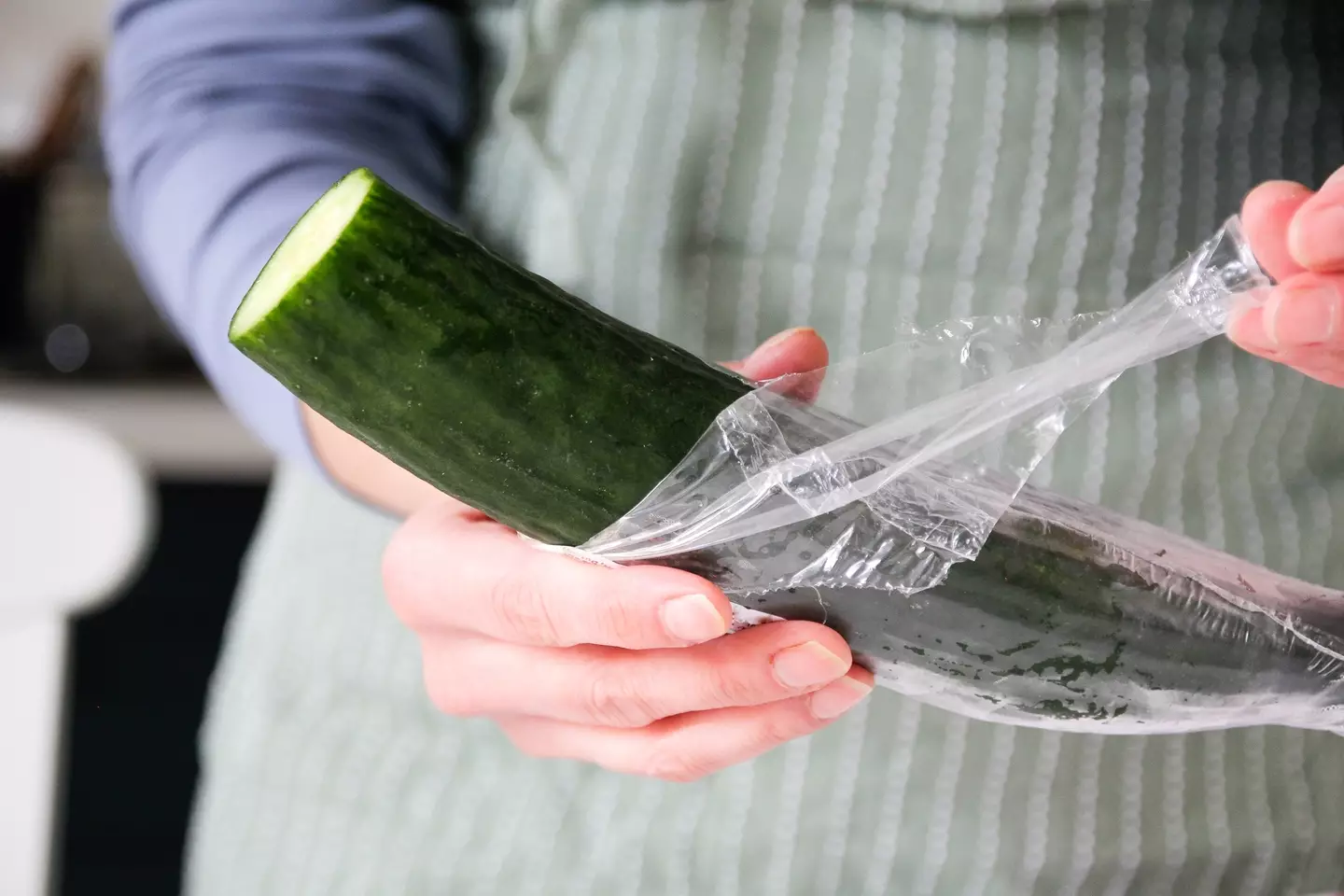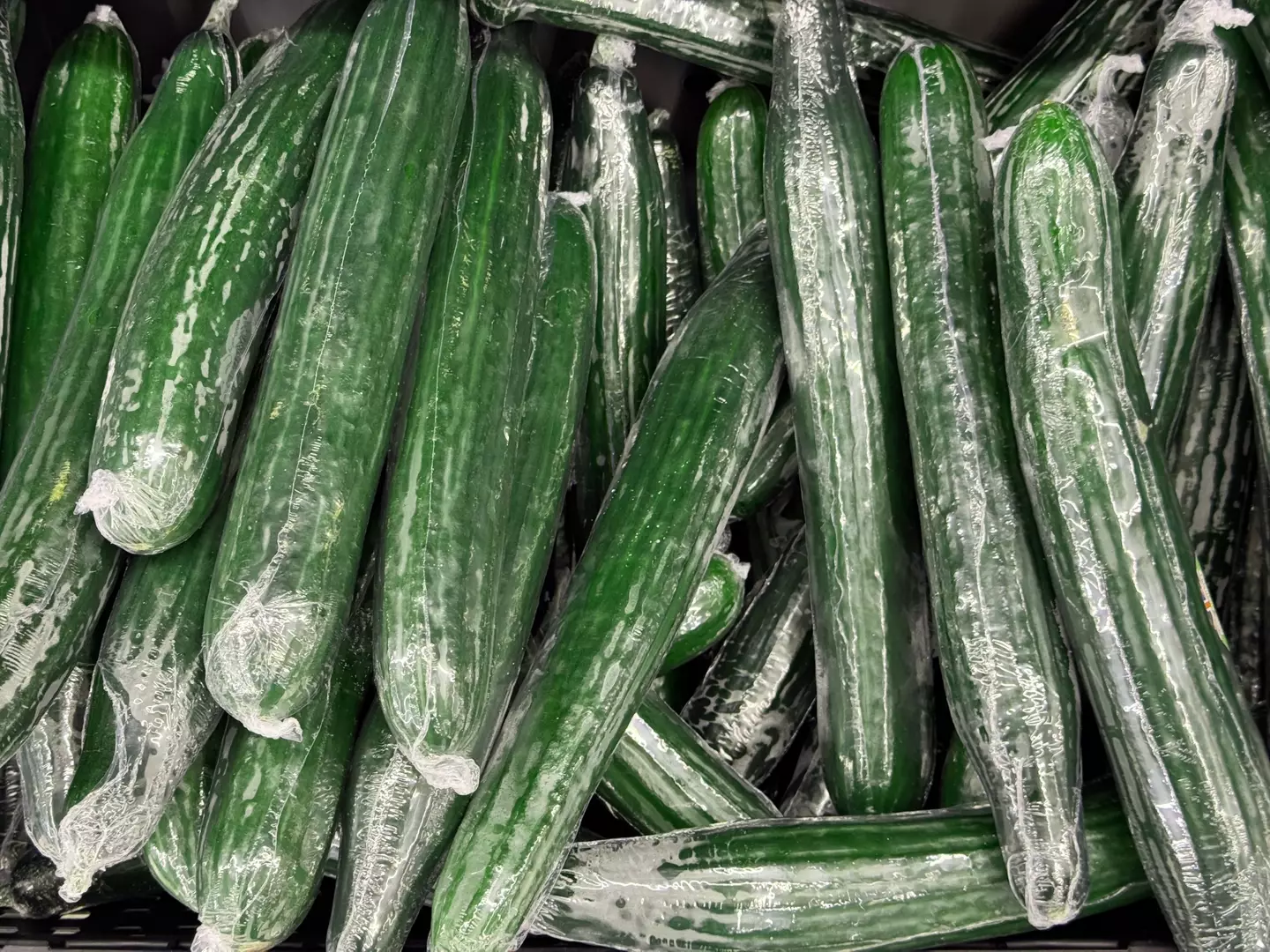
Did you know that cucumbers are a fruit?
Did you know that cucumbers aren’t just a fruit, but a berry?
Did you know that cucumbers are berries, but strawberries aren’t?
Now that your mind has been sufficiently blown with interesting but tame facts, let’s get into it with cucumber plastic.
Advert
You’ve likely noticed that cucumbers come with a ready-made, and relatively thick skin protecting the juicy innards. With that in mind, and considering we’re trying to reduce single-use plastics, you’d think supermarket cucumbers’ plastic wrap would be long gone.

It isn’t just corporate negligence, if you can believe it; there’s a very good reason why cucumbers still come in their plastic sheaths.
First up, the plastic helps the cucumbers to retain moisture. Unlike the skins of apples and bananas, cucumbers’ are too thin and porous to retain their internal moisture for very long. You’ve probably noticed this a couple of days after peeling one open. They start crusty pretty quickly, don’t they?
Advert
But of course, you’re here for the grim reason why cucumbers are always wrapped in plastic, so do strap in.
Not only does the plastic keep moisture in, it keeps oxygen out. Bacterial growth rates are very slow, if not halted entirely, when there’s little to no oxygen available, and so keeping cucumbers’ wrapped in plastic stops the nasties from multiplying on your ‘cumber.
Bacteria also thrive in moist environments, so if moisture is leaking out of the cucumber from the inside, and bacteria on the skin have got plenty of oxygen, they’re in a great spot to multiply and potentially make you ill when you tuck in.
Cucumbers also provide nutrients and a pleasant acidity level for bacterial growth, making them pretty much perfect places for bacteria to flourish if they aren’t kept in plastic and stored in the fridge. Cold temperatures also slow down bacterial growth rates.
Advert
Sadly, the plastic can’t stop salmonella or botulism from developing on the cucumbers’ surface. It’s recommended that you rinse you cucumber before eating it, even if it’s plastic-wrapped. Wiping it dry with some kitchen towel will also help clear away any grime left over from its days spent growing in an industrial greenhouse.
You might think none of that is worth the plastic use, but it’s actually better for the environment to use plastic in this instance.

Writing for IFLScience, Dr Katie Spalding said:
Advert
“Throwing away a whole cucumber due to it becoming rotten or inedible has the equivalent environmental impact of a whopping 93 plastic wraps, according to one 2022 paper; put simply, without the protection offered by this salad prophylactic, your cucumber-based carbon footprint may actually be bigger than it currently is.”
Considering food waste is a massive problem in the developed world, keeping your cucumbers fresh for long enough to eat them means the single-use plastics are a necessary evil until we get a suitable, eco-friendly alternative.
